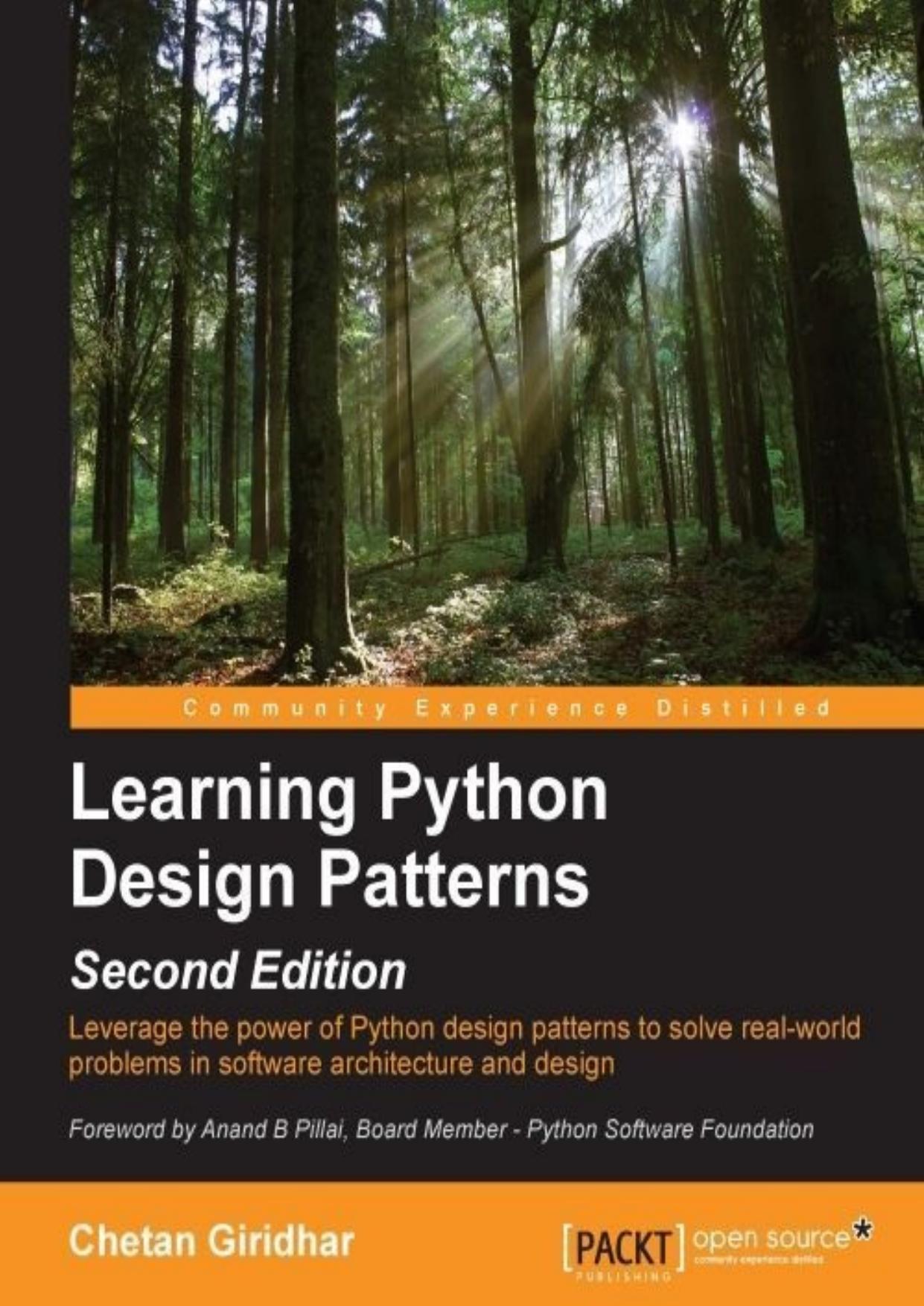Learning Python Design Patterns - Second Edition by Chetan Giridhar

Author:Chetan Giridhar
Language: eng
Format: mobi, epub, azw3, pdf
Publisher: Packt Publishing
Published: 2016-02-14T22:00:00+00:00
Understanding the Observer design pattern
In the Observer design pattern, an object (Subject) maintains a list of dependents (Observers) so that the Subject can notify all the Observers about the changes that it undergoes using any of the methods defined by the Observer.
In the world of distributed applications, multiple services interact with each other to perform a larger operation that a user wants to achieve. Services can perform multiple operations, but the operation they perform is directly or heavily dependent on the state of the objects of the service that it interacts with.
Consider a use case for user registration where the user service is responsible for user operations on the website. Let's say that we have another service called e-mail service that observes the state of the user and sends e-mails to the user. For example, if the user has just signed up, the user service will call a method of the e-mail service that will send an e-mail to the user for account verification. If the account is verified but has fewer credits, the e-mail service will monitor the user service and send an e-mail alert for low credits to the user.
Thus, if there's a core service in the application on which many other services are dependent, the core service becomes the Subject that has to be observed/monitored by the Observer for changes. The Observer should, in turn, make changes to the state of its own objects or take certain actions based on the changes that happen in the Subject. The above scenario, where the dependent service monitor's state changes in the core service, presents a classical case for the Observer design pattern.
In the case of a broadcast or publish/subscribe system, you'll find the usage of the Observer design pattern. Consider the example of a blog. Let's suppose that you're a tech enthusiast who loves to read about the latest articles on Python on this blog. What will you do? You subscribe to the blog. Like you, there would be multiple subscribers that are also registered with the blog. So, whenever there is a new blog, you get notified, or if there is a change on the published blog, you are also made aware of the edits. The way in which you're notified of the change can be an e-mail. Now if you apply this scenario to the Observer pattern, the blog is the Subject that maintains the list of subscribers or Observers. So when a new entry is added to the blog, all Observers are notified via e-mail or any other notification mechanism as defined by the Observer.
The main intentions of the Observer pattern are as follows:
Download
Learning Python Design Patterns - Second Edition by Chetan Giridhar.epub
Learning Python Design Patterns - Second Edition by Chetan Giridhar.azw3
Learning Python Design Patterns - Second Edition by Chetan Giridhar.pdf
This site does not store any files on its server. We only index and link to content provided by other sites. Please contact the content providers to delete copyright contents if any and email us, we'll remove relevant links or contents immediately.
| Ada | Ajax |
| Assembly Language Programming | Borland Delphi |
| C & C++ | C# |
| CSS | Compiler Design |
| Compilers | DHTML |
| Debugging | Delphi |
| Fortran | Java |
| Lisp | Perl |
| Prolog | Python |
| RPG | Ruby |
| Swift | Visual Basic |
| XHTML | XML |
| XSL |
The Mikado Method by Ola Ellnestam Daniel Brolund(20724)
Hello! Python by Anthony Briggs(20010)
Secrets of the JavaScript Ninja by John Resig Bear Bibeault(18332)
The Well-Grounded Java Developer by Benjamin J. Evans Martijn Verburg(17688)
OCA Java SE 8 Programmer I Certification Guide by Mala Gupta(17496)
Kotlin in Action by Dmitry Jemerov(17308)
Algorithms of the Intelligent Web by Haralambos Marmanis;Dmitry Babenko(16319)
Grails in Action by Glen Smith Peter Ledbrook(15467)
Sass and Compass in Action by Wynn Netherland Nathan Weizenbaum Chris Eppstein Brandon Mathis(13331)
Test-Driven iOS Development with Swift 4 by Dominik Hauser(10417)
Windows APT Warfare by Sheng-Hao Ma(7833)
Layered Design for Ruby on Rails Applications by Vladimir Dementyev(7549)
Blueprints Visual Scripting for Unreal Engine 5 - Third Edition by Marcos Romero & Brenden Sewell(7452)
Solidity Programming Essentials by Ritesh Modi(4568)
Functional Programming in JavaScript by Mantyla Dan(4445)
Hands-On Full-Stack Web Development with GraphQL and React by Sebastian Grebe(4433)
WordPress Plugin Development Cookbook by Yannick Lefebvre(4388)
Unity 3D Game Development by Anthony Davis & Travis Baptiste & Russell Craig & Ryan Stunkel(4270)
The Ultimate iOS Interview Playbook by Avi Tsadok(4252)
